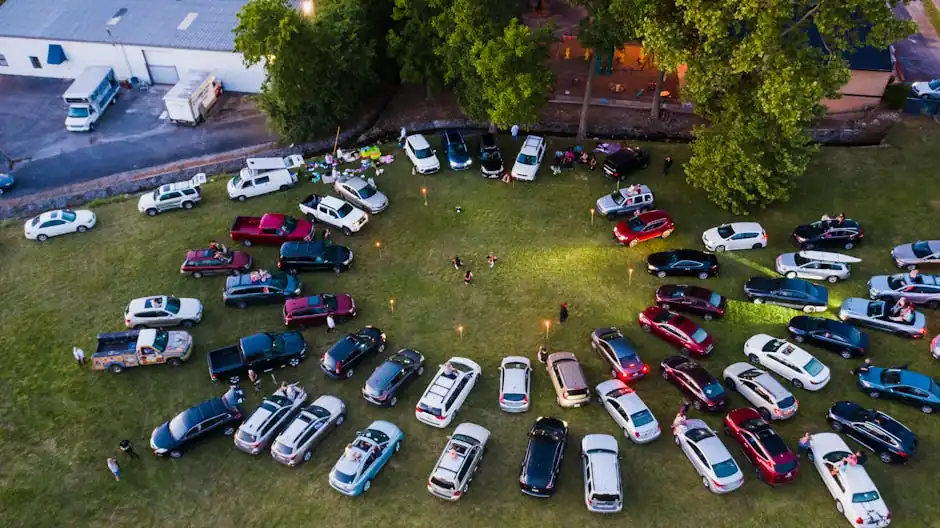Navigating the World of Automotive Event Logistics

Steering through the intricate world of automotive event logistics can be a daunting task, but fear not! In this post, we will delve into the nitty-gritty details of how to successfully navigate this challenging terrain. From understanding the basics to leveraging technology and gathering feedback, we've got you covered every step of the way.
Understanding Automotive Event Logistics

The basics of event logistics in the automotive world
Event logistics in the automotive industry involve the planning, coordination, and execution of various activities related to events such as product launches, trade shows, test drives, and promotional events. These activities include transportation of vehicles, setting up displays, managing schedules, coordinating with vendors, and ensuring a seamless experience for attendees.
Key components of automotive event logistics include:
- Vehicle transportation: Ensuring safe and timely delivery of vehicles to event locations.
- Venue selection: Choosing appropriate venues that can accommodate vehicles and provide necessary facilities.
- Display setup: Designing and setting up attractive displays that showcase vehicles effectively.
- Staffing: Hiring and training staff to manage different aspects of the event.
- Security: Implementing security measures to protect vehicles and ensure a safe environment for attendees.
Why it's a unique challenge
Automotive event logistics present unique challenges due to the nature of the products involved. Vehicles are large, expensive, and often require special handling during transportation and display. Additionally, events in the automotive industry often attract large crowds and media attention, requiring meticulous planning to ensure everything runs smoothly.
Some key challenges in automotive event logistics include:
- Vehicle handling: Ensuring that vehicles are transported safely without any damage.
- Timing: Coordinating schedules to ensure that vehicles arrive on time for events.
- Space constraints: Dealing with limited space at event venues to accommodate vehicles and attendees.
- Brand representation: Maintaining brand image through consistent messaging and presentation at events.
In conclusion, navigating the world of automotive event logistics requires careful planning, attention to detail, and effective communication among all stakeholders involved. By understanding the basics of event logistics in the automotive industry and recognizing its unique challenges, organizers can successfully execute memorable events that showcase their brand and products effectively.
Planning and Preparation
Laying the groundwork for success
When it comes to organizing automotive events, meticulous planning and preparation are key to ensuring a smooth and successful experience. From coordinating schedules to managing logistics, every detail must be carefully thought out.
One of the first steps in planning an automotive event is to establish clear objectives and goals. Whether it's a car show, race, or product launch, having a clear vision will help guide the rest of the planning process.
Next, it's essential to create a detailed timeline outlining all necessary tasks leading up to the event. This includes securing venues, arranging permits, coordinating with vendors, and promoting the event to attract attendees.
Securing the right transportation and storage solutions
Transportation and storage are crucial components of automotive event logistics. Whether you're moving vehicles from one location to another or storing them on-site during the event, having reliable solutions in place is essential.
When selecting transportation options, consider factors such as vehicle size, distance traveled, and any special requirements for delicate or high-value vehicles. Working with reputable transport companies can help ensure that vehicles arrive safely and on time.
For on-site storage needs, choose secure facilities that offer protection from theft, vandalism, and weather damage. Having designated areas for vehicle parking or display can help streamline operations during the event.
By taking the time to plan ahead and secure the right transportation and storage solutions, you can set your automotive event up for success.
Execution Excellence
On-the-ground strategies for smooth operations
When it comes to automotive event logistics, having on-the-ground strategies in place is crucial for ensuring smooth operations. This includes having a detailed plan for transportation, setup, and breakdown of equipment and vehicles.
Key strategies for smooth operations:
- Assigning dedicated staff members to oversee logistics
- Conducting site visits prior to the event to identify any potential challenges
- Establishing clear communication channels with all stakeholders involved
By implementing these on-the-ground strategies, you can minimize disruptions and ensure that the event runs seamlessly.
Keeping up with real-time adjustments
In the fast-paced world of automotive events, being able to adapt to real-time adjustments is essential. Whether it's dealing with unexpected weather conditions, last-minute changes in schedules, or unforeseen logistical challenges, being able to think on your feet is key.
Tips for keeping up with real-time adjustments:
- Stay in constant communication with all team members and vendors
- Have backup plans in place for various scenarios
- Utilize technology tools such as event management software to track changes and updates
By staying flexible and proactive in your approach, you can navigate the ever-changing landscape of automotive event logistics with ease.
Technology in Automotive Event Logistics
In today's fast-paced world, technology plays a crucial role in the success of automotive event logistics. By leveraging software and digital tools, companies can streamline their operations and ensure seamless execution of events.
Leveraging software for efficiency
One of the key benefits of using software in automotive event logistics is the ability to increase efficiency. From managing inventory to tracking shipments, software can automate processes that would otherwise be time-consuming and prone to human error. This not only saves time but also reduces costs associated with manual labor.
The role of tracking and communication tools
Tracking and communication tools are essential in ensuring smooth logistics operations during automotive events. These tools allow companies to monitor the movement of vehicles, parts, and equipment in real-time, providing valuable insights into their location and status. Additionally, communication tools enable teams to stay connected and coordinate effectively, leading to better collaboration and faster decision-making.
By embracing technology in automotive event logistics, companies can enhance their overall efficiency and effectiveness, ultimately leading to successful events that leave a lasting impression on attendees.
Post-Event Analysis and Feedback

After the hustle and bustle of an automotive event has come to a close, it's crucial to take the time to conduct a thorough post-event analysis. This step is essential for gathering insights that can drive future success and improve the overall logistics of your next event.
Gathering insights to drive future success
-
Survey Participants: One of the most effective ways to gather feedback is by sending out surveys to participants. These surveys can cover various aspects of the event, such as registration process, venue location, quality of speakers, and overall satisfaction.
-
Review Data Analytics: Utilize data analytics tools to track key metrics such as attendance numbers, engagement rates, social media mentions, and website traffic before, during, and after the event. This data can provide valuable insights into what worked well and what areas need improvement.
-
Engage with Stakeholders: Don't forget to engage with stakeholders such as sponsors, vendors, and partners for their feedback on how the event was organized and executed. Their perspectives can offer unique insights that may have been overlooked.
Implementing changes based on participant feedback
-
Identify Key Areas for Improvement: Analyze the feedback received from participants to identify common themes or issues that need addressing. Whether it's long wait times at registration or lack of networking opportunities, pinpointing these areas will help prioritize changes for future events.
-
Create an Action Plan: Based on the identified areas for improvement, create a detailed action plan outlining specific changes that need to be implemented. This plan should include timelines, responsible parties, and measurable goals to track progress.
-
Communicate Changes: Once the action plan is in place, communicate these changes with participants through email updates or social media posts. Transparency about improvements being made shows a commitment to enhancing the event experience based on feedback received.
By conducting a thorough post-event analysis and implementing changes based on participant feedback, you can continuously improve the logistics of your automotive events and ensure they are successful for both attendees and stakeholders alike.
Understanding Automotive Event Logistics
 When it comes to organizing events in the automotive industry, logistics play a crucial role. The basics of event logistics in the automotive world involve coordinating transportation, storage, and on-site operations to ensure everything runs smoothly. This unique challenge requires meticulous planning and attention to detail.
When it comes to organizing events in the automotive industry, logistics play a crucial role. The basics of event logistics in the automotive world involve coordinating transportation, storage, and on-site operations to ensure everything runs smoothly. This unique challenge requires meticulous planning and attention to detail.